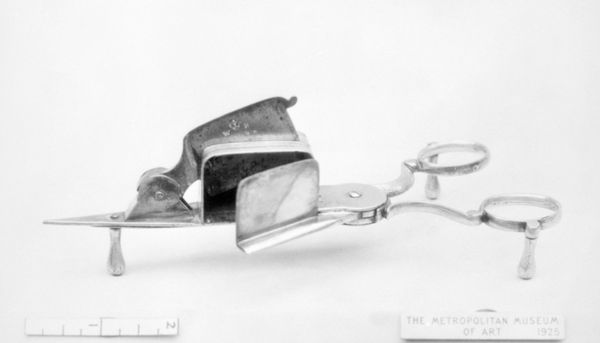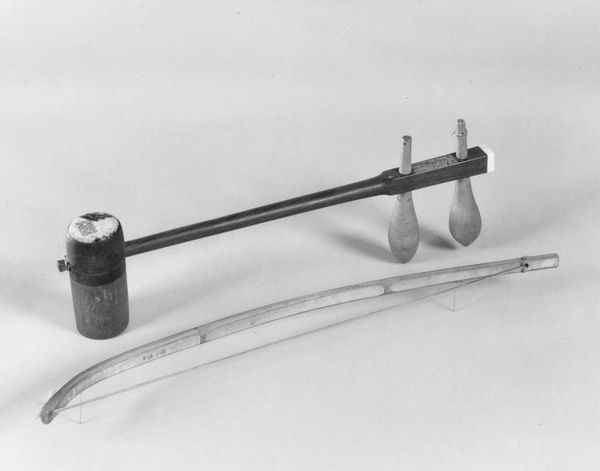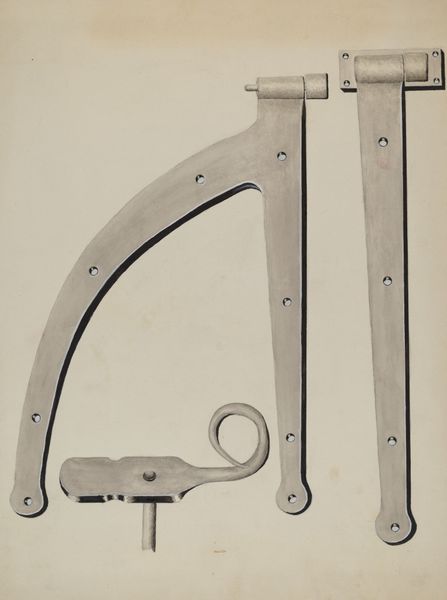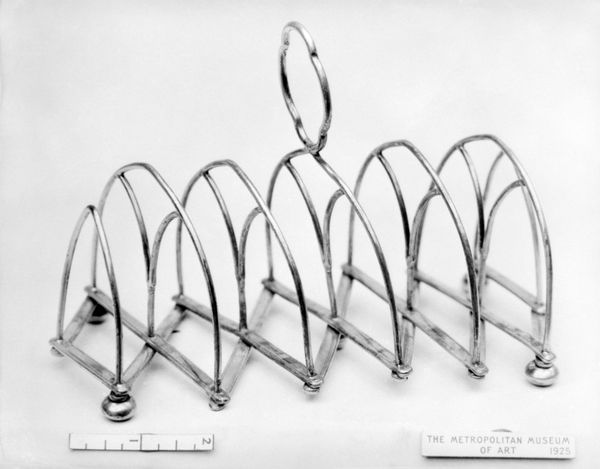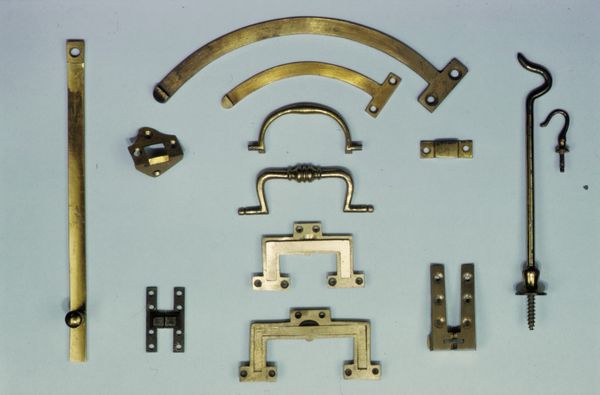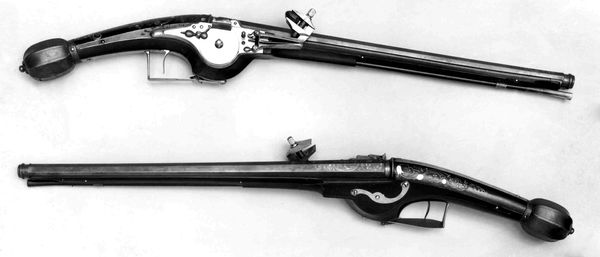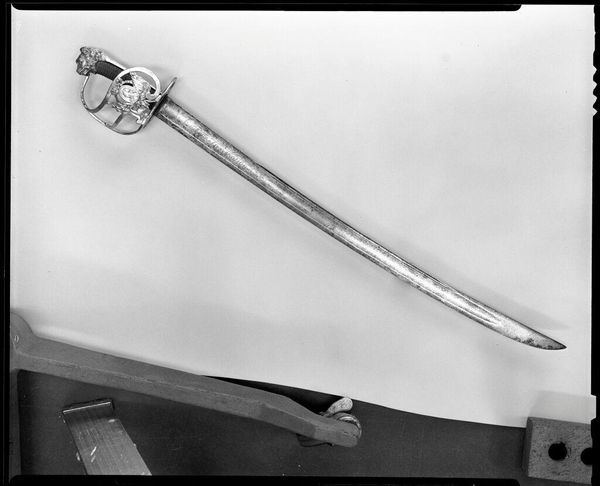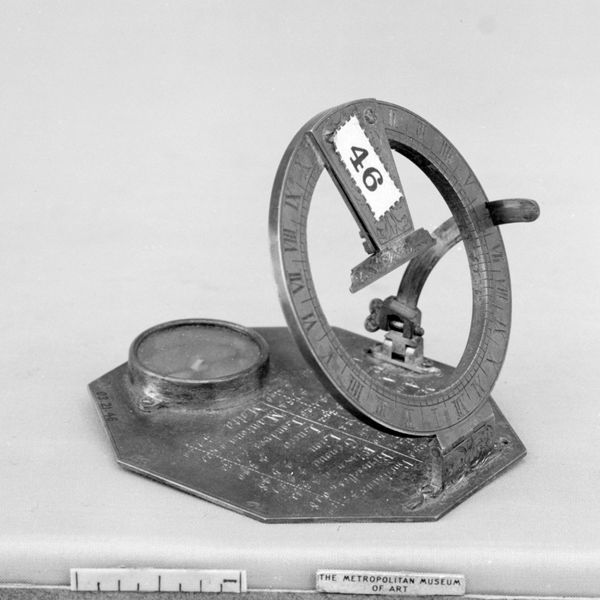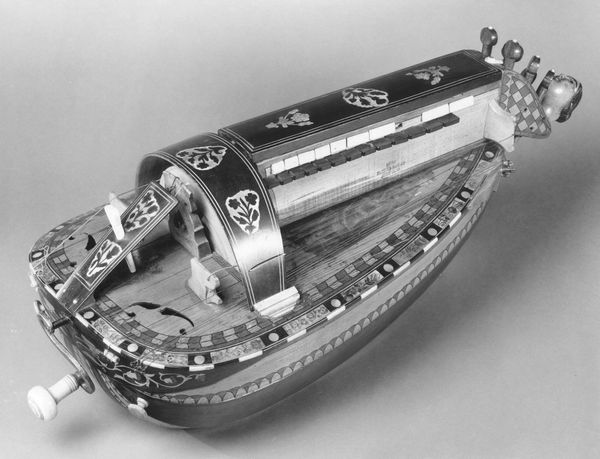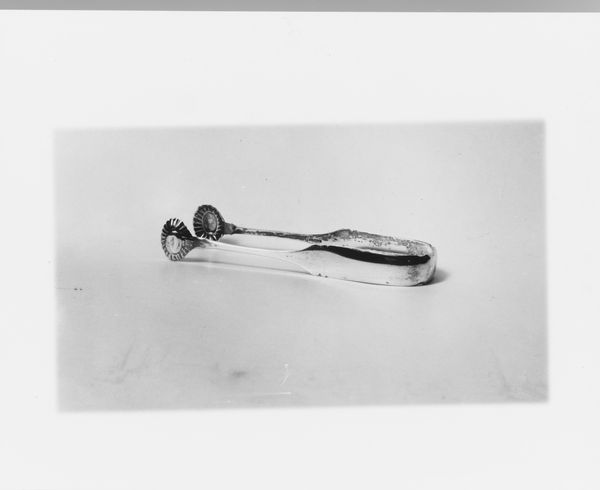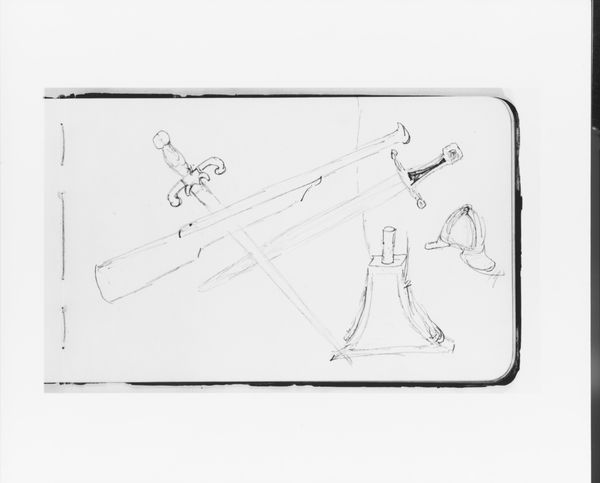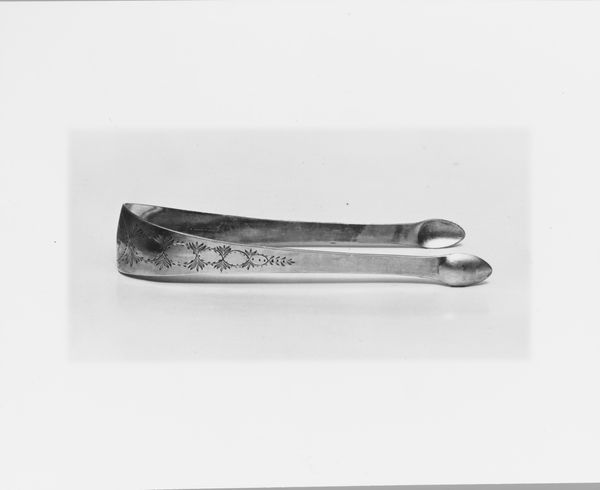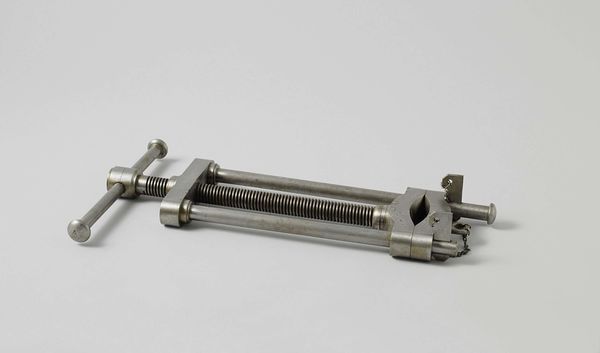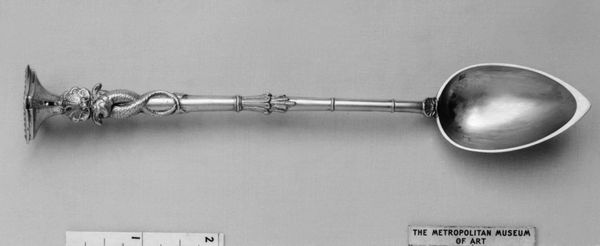
silver, metal, photography, sculpture
#
silver
#
metal
#
sculpture
#
photography
#
sculpture
#
carved
Dimensions: H. 8 3/4 in. (22.2 cm)
Copyright: Public Domain
Curator: This photographic record captures "Furniture Hardware," created between 1820 and 1830. The artist, Henry Kellam Hancock, meticulously documents an array of functional forms using metal and silver; this piece resides here at The Metropolitan Museum of Art. Editor: There’s something elegant and unsettling about the display. They're undeniably beautiful in their precision, each little crank and knob, but arranged like this, they're almost entomological, like a collection of strange silver insects pinned for display. Curator: I find the stark arrangement incredibly compelling. It allows for an analytical parsing of form and function. Notice the repetition of circular motifs in the doorknobs contrasted with the sharp angles of the hinges. There's a clear articulation of geometric principles at play. Editor: Exactly! It's the contrast. The curves practically writhe, but they're trapped by those hard, right-angled edges. Makes you think about control and confinement even though they are designed to literally enable motion. Curator: We observe a specific dialogue between positive and negative space; each piece interacts dynamically with the blank backdrop, creating its own visual rhythm through the orchestration of shadows and highlights. Editor: Yes, and look how the light plays on the silver! It's cold and clinical but also sort of inviting, don't you think? These aren’t just objects; they once belonged somewhere, did something. They imply narrative without revealing anything concrete. It is as if they still expect to have handles grasped, latches slid, and locks turned. Curator: I believe the photography’s deliberate simplicity underscores the core essence of functionality inherent in each form, freeing the pieces from overt association. Editor: True, yet the image also, inadvertently, imbues a bit of gothic sensibility to it, doesn’t it? Each object stands like some sort of antique component taken from a Victorian tale… Curator: On final analysis, I find the photographic work an effective tool for disassembling the presumed notions around functionality as only existing relative to purpose, reframing how function interacts dynamically as its own intrinsic principle. Editor: Indeed! What begins as simple documentation becomes an understated elegy of a designed world. They feel like ghostly tools ready to be of service but stuck in silence... Pretty powerful considering these are humble components captured on a simple frame!
Comments
No comments
Be the first to comment and join the conversation on the ultimate creative platform.
